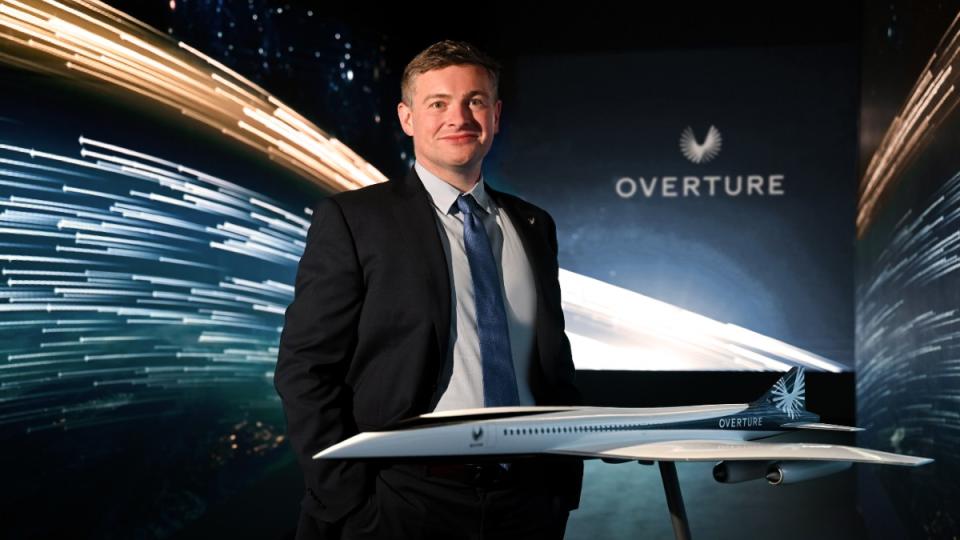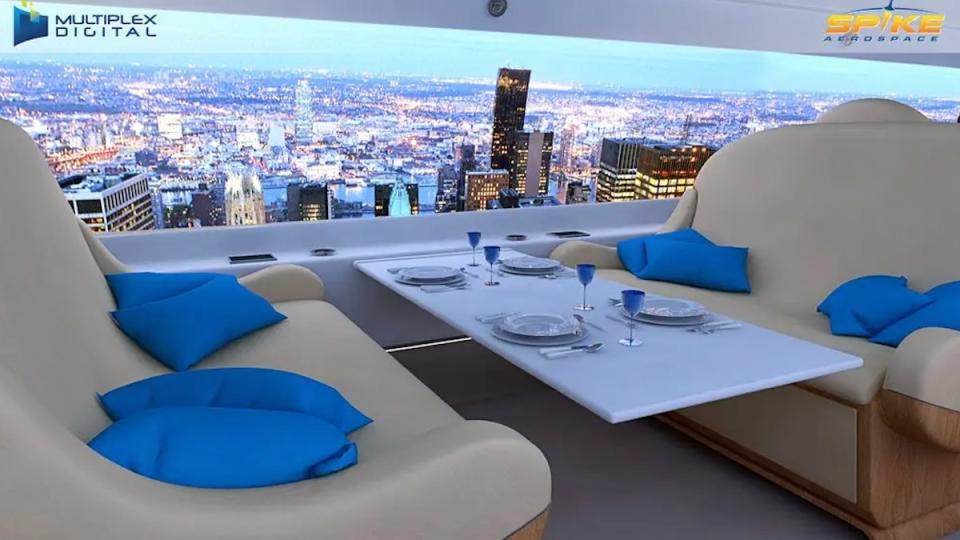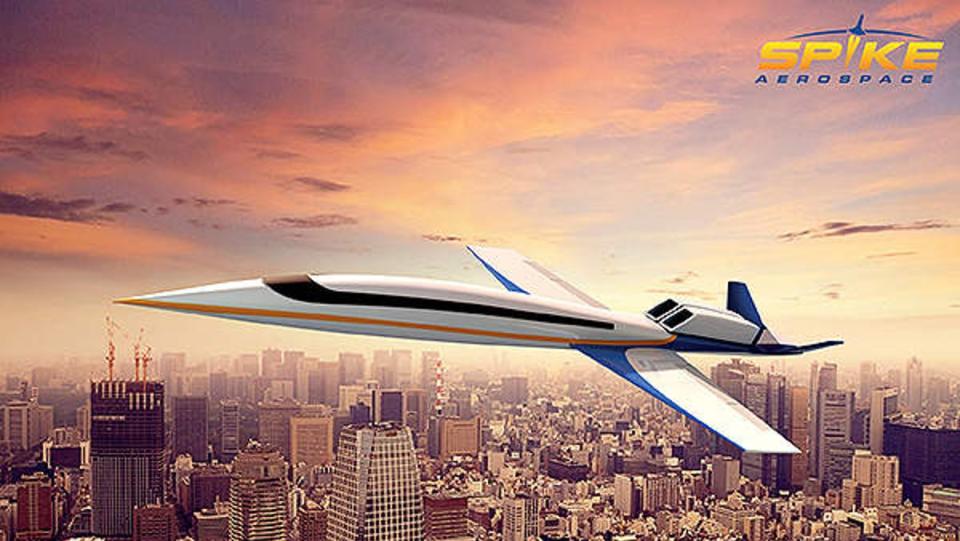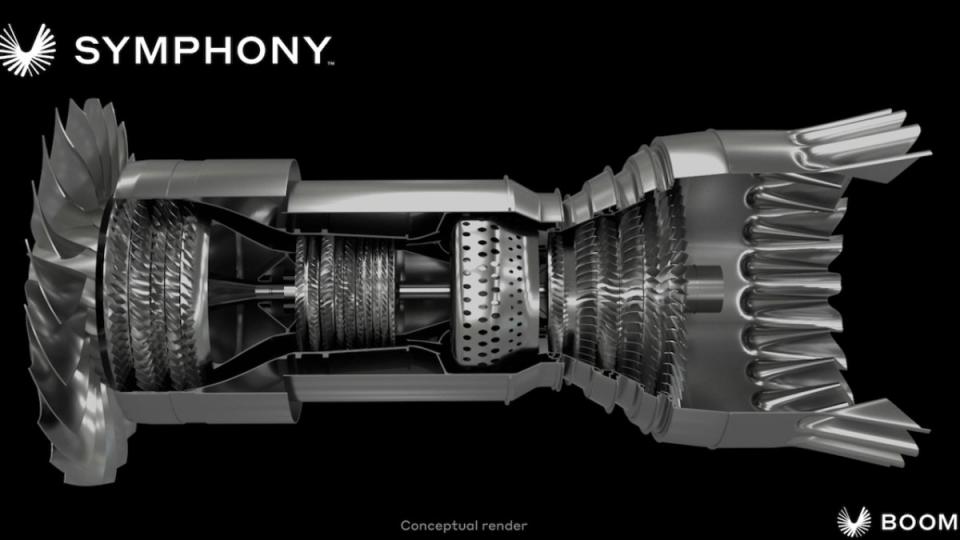These Next-Gen Supersonic Jets Want to Replace the Concorde. Will They Ever Take Off?

To dig into the state of supersonic flight these days is to invite an unlikely conversation about cell phones. Three out of five experts in the field compared the smartphone of 20 years ago with a future generation of jets that hope to blow past Mach 1.
“Think of the original iPhone. In those early days, it made huge leaps every year. That’s where we are with supersonic,” says Blake Scholl, CEO of Boom. “Tech advances in S-curves. Products go through periods of slow development, then rapid improvement, then level off again to incremental gains.”
More from Robb Report
This Bonkers High-Speed X-Plane Combines a Jet's Speed With an VTOL's Agility
How NASA's New Supersonic Jet Replaced the Boom With a Quiet Thud
The Science of Beauty: How Bleeding-Edge Biotech Is Transforming How We Look
The Concorde, the world’s only commercial supersonic jet, was the big, clunky plastic phone that the very wealthy first had in their cars, while the new breed of supersonic jet is a flip phone with a keyboard that, according to supersonic’s believers, will eventually morph into the sleek, multifunction supercomputer that has become so affordable that it’s available to almost everyone.
“It’s taken longer than we would’ve hoped, but there will absolutely be supersonic flight,” says Vik Kachoria, the CEO of Spike Aviation. “We think supersonic will offer a lot of value and will be very useful.”
Not everyone shares his certitude.

“If you go back and look it up, starting from the ‘90s, proponents of supersonic flight say it is always 10 years away,” says Brian Foley, a business aviation industry consultant. “Why 10 years? Probably because it’s a number that’s not too distant, but far enough that when the time comes, no one will remember all the promises you made and failed to deliver on.”
One hopeful, Aerion, which counted Boeing and Lockheed Martin as investors, shuttered in 2021 after nearly 20 years of planning for its next-generation AS2 supersonic business jet. If any private company had the potential create a new commercial supersonic reality, it seemed to be Aerion. The backers invested billions and hired top aerospace engineers to work on the minutia of flight beyond Mach 1.0, or 767 mph.
Then, out of the blue, the company shut down because it couldn’t secure long-term investors who believed in supersonic’s potential. “They had put together amazing talent,” said aviation consultant Rollie Vincent, who did some work for Aerion, shortly after the closure. “The number of PhDs per square foot was off the charts,” he said. “But they weren’t building things. They were trying to refine design and purify aerodynamics. At some point, everybody, including investors, want to see real parts.”

Boom, now leading a handful of private supersonic aircraft developers, seemed to realize early that it needed hardware to demonstrate its progress. The company launched its XB-1 demonstrator jet on March 22. Its initial flight topped out at less than 240 knots, but for the first time since the Concorde, a non-military plane built for supersonic speed executed a successful flight. If future test flights progress as projected, the XB-1 could make a run at the sound barrier within a year. And the company’s 150,000-square-foot production facility in Greensboro, N.C., is on schedule to open in late ‘24.
Not far behind, NASA’s X-59 experimental craft should make its first flight later this year. The jet, a product of the QueSST project, represents the government’s attempt to reduce the sonic boom, a key development for supersonic’s commercial future, since it’s illegal to break the sound barrier over land in the U.S. and most other countries.
“The key to lowering the boom is in shaping the airplane and the wing, smoothing them out so the shock waves don’t combine,” says Dave Richwine, deputy project manager for technology on the X-59. “NASA is working at a fundamental level and, hopefully, the industry will bring it all together.”

There are signs that approach is working. Spike has absorbed much of NASA’s work while modifying and applying the theories to a larger craft, its 12- to 18-seat business jet called the Diplomat, which won’t launch until at least 2026. Like the X-59, it aims to reduce the boom by manipulating and flattening the sonic waves so they’re directed upwards and largely cancel each other out. The goal is a sonic “thump” or a ground-level sound of roughly 75 decibels perceived, akin to a closing car door.
Exosonic, which is developing unmanned supersonic drones for military training and a 70-seat passenger jet, expresses a similar goal on sound, and is part of the group rallying to change the current law. Instead of a speed limit, builders want a sound limit, so it doesn’t matter how fast a plane flies, so long as it doesn’t rattle the windows of the houses it passes over.
Boom is less preoccupied with noise. Scholl says at some point, a standard will be issued and Boom will meet it. For now, the company plans to address the issue by only going supersonic over the ocean. Over land its planes, says Scholl, will operate 20 percent faster than current commercial jets.

In theory, Boom’s XB-1 will eventually lead to the Overture, the 64- to 80-seat commercial aircraft the company plans to build once it dials in the technology. American, Japan Air, and United have all put in non-refundable preorders of Overtures, and Scholl hopes the plane will be flying with passengers by 2030.
“We’re very engaged with the FAA and we’ve already received our G1 certification,” Scholl explains. “It’s a long list of boxes we have to check, as it should be, but we’re locked in on the needs and all we have to do is meet them.”
All these supersonic projects feature a modified delta wing and a long, tapered nose that gives the craft a more futuristic, streamlined profile than the Concorde. Aesthetically, the designs are attractive, but they also make it impossible for pilots to see, a problem solved by a system of cameras mounted on the exterior. The XB-1 includes an augmented reality overlay with guidance for the pilots.

Spike, which has a longer development timeline, eliminated almost all the windows on the body, replacing them with hi-definition flat screens that run the length of the cabin, on which they can project the exterior view—or a movie or “anything you can put on a computer screen,” says Kachoria.
The Spike chief executive compares the Diplomat to a Gulfstream, with a customizable interior and the option of plush, oversized seats, and Exosonic too plans a business jet version, with three suites, executive seating, and full-recline chairs. Across the supersonic category, weight limitations will reduce the capacity for the kinds of comforts found in typical first-class service, but other considerations will, presumably, make up for any lack of poshness and interior space. “Instead of getting upgraded to business class, someone might get upgraded to supersonic,” says Kachoria. “You won’t have fancy plates, but you’ll arrive at your destination in half the time.”
Foley, who did market research on supersonic jets when he was employed at Dassault Falcon and has worked with Spike, remains skeptical. He forecasts a market of about 300 jets for private owners, or about 30 planes a year for 10 years: “Is that even enough for an engine manufacturer to participate?”

Apparently not. When Aerion shut down, GE Aerospace halted three years of development of the Affinity supersonic engine designed to power Aerion’s AS2. GE, along with major engine builders Pratt & Whitney, Rolls-Royce, Honeywell Aerospace and Safran all passed on developing an engine for Boom, according to AIN.
That left the company with no option but to form an alliance that included Florida Turbine Technologies, GE Additive and StandardAero to invent a propulsion solution, an engine called the Symphony.
“Designing an engine is no easy task, especially from scratch, and it’s potentially a multibillion-dollar exercise beyond designing the plane,” Foley told Robb Report a year ago.

Despite that, Boom has built the XB-1 and taken it to the sky. “The technology and supply chain exist,” says Scholl. “There’s no fundamental new science—every key technology in this airplane has already flown before.”
In early 2021, Subaru, Mitsubishi Heavy Industries, and several other companies formed Japan Supersonic Research with a goal of having an SST passenger jet by 2030. They partnered with the Japan Aerospace Exploration Agency and have access to JAXA research going back to 1997. Shigeya Watanabe, deputy director, recently told Aero Society it was working on improving current technologies as well as developing more sustainable propulsion technologies.
Sustainability was a non-issue when the Concorde first took off in 1969. It burned four times more fuel than a 747 on a Paris-New York flight. Fifty-five years later, it’s now a core challenge for aviation, especially supersonic aircraft. Environmental scientists Anastasia Kharina and Tim MacDonald wrote in a study for the International Council on Clean Transportation that “commercial SSTs could be three times as fuel intensive per passenger as comparable subsonic aircraft.”

Boom and Exosonic hope to solve the green issue by designing their engines to run on 100-percent sustainable aviation fuel (SAF) while Spike is exploring electric and hydrogen. “The technology for design is so much faster now,” says Kachoria in discussing the engineering challenges. “We can make modifications and see the result onscreen in seconds. They built the Concorde with slide rules and drafting paper and did 10 total iterations. We can do 1,000 simulations in a few hours.”
Kachoria sees supersonic’s potential upside as 900 or more planes over 20 years going to a mix of high-net-worth individuals, fractional leasing services, and airlines. Scholl is even more bullish. “Our ultimate goal is to have supersonic flights on all routes for all passengers,” he says. “These planes will create their own need. As soon as people see others crossing the Pacific in four hours, they’ll say, ‘Why are we sitting in this metal tube for so long when we don’t have to?’”
If Boom and the other supersonic builders succeed, how long will it be before someone is asking a similar question about their jets? Destinus and Hermeus are also aviation start-ups, and they’re developing hypersonic jets that will travel at up to five times the speed of sound.

Pipe dreams or the birth of a new era in flight? The outcome could depend, as Aerion found out, on whether the manufacturers can find the start-up funds, amounting to many billions, for a viable niche in commercial and business aviation. “Never say never,” says analyst Foley. “But these things tend to move at the speed of money, and investors don’t seem to have the risk appetite.”
Best of Robb Report
Sign up for Robb Report's Newsletter. For the latest news, follow us on Facebook, Twitter, and Instagram.

 Yahoo News
Yahoo News 
